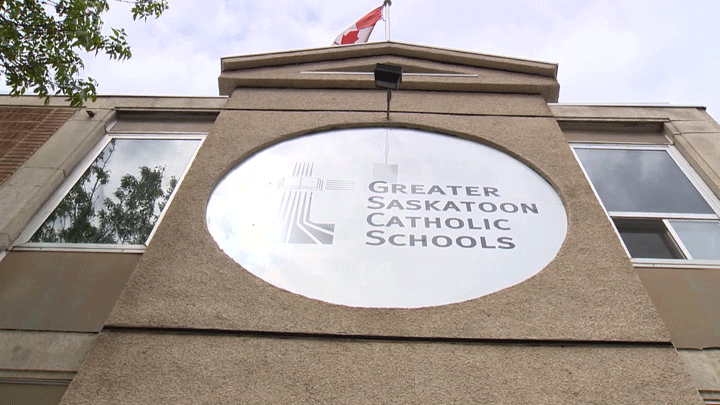Struggling programs and services within the Greater Saskatoon Catholic Schools system are being shrunk or eliminated after the board had to squeeze to fit in a passing budget Monday night.

“Due to the announced funding levels, offering the same services as in 2022-23 will not be possible. The provincial budget had no consideration for support staff collective agreements, teacher salary increments, local agreement costs, statutory benefit increases and other payroll related costs, fuel, insurance and utility increases, as well as other general inflation, unprecedented enrolment growth, and continuing need for specialized programming to meet student needs,” read the budget documents.

A list of several programs being impacted for the 2023-24 school year was given:
- Full-day every-day kindergarten will be only offered at two schools, compared with 10 schools in 2022-23.
- No longer staffing an attendance care team.
- No longer offering the EcoJustice program.
- No longer offering Extended Learning Opportunities.
- No longer offering levelled literacy intervention at four schools.
- Reducing the number of rural transportation routes.
- Reducing teacher librarian allocations from 10 per cent to zero per cent.

The struggling Greater Saskatoon Catholic Schools (GSCS) budget will also impact families’ pocketbooks, as the lunch hour supervision fee at elementary schools is rising to $10 a month from $7 last year. A high school supervision fee is also being introduced, which will be $25 a year per student.

Get daily National news
The Sask Party government has been touting that it was giving record funding to school divisions since the release of the provincial budget, adding that it is up to school divisions to allocate those funds.
But GSCS disputes that, saying funding is actually going down if you look at per-student funding.
“Even with the additional revenue, we will still receive less per-student funding compared to 2022-23. The change in per-student funding for 2023-24 is projected to be -1.1 per cent or about $112.56 less per-student. When per-student funding decreases, and we are experiencing rates of inflation not been seen for 10 years, the spending power of similar dollars is significantly reduced. This erosion of per-student funding contributed to a $2.5 million funding shortfall.”
Global News spoke with the chair of GSCS, Diane Boyko, who said getting to this point has been a long journey.
“Are we happy? I would say no,” Boyko said.
She said tough decisions needed to be made this year.
Boyko said the school system is getting targeted funding, but the inflationary costs aren’t being looked at.
She said that GSCS wants to provide kids the type of education their parents and guardians want for them, adding that it will continue to lobby the provincial government for the sustainable funding it needs.
GSCS isn’t the only school division facing budget struggles, as Saskatoon Public Schools underwent a similar slashing of services last week to arrive at a balanced budget.
The budget will be submitted to the Ministry of Education for approval.
Global News reached out to the Ministry of Education and received a statement.
The ministry was asked if they were going to address inflationary increases, decreases in per-student funding, the lunch-time fees, or anything regarding sustainable funding.
The ministry pointed to the additional $40 million it announced back on June 1 that was to be divvied out among all of the province’s school divisions.
“There is $20 million in new funding to ensure that enrolment growth above initial school division projections for the 2023-24 school year is fully funded. Funding for Greater Saskatoon Catholic Schools will be allocated in the fall based on actual enrolments. The Government of Saskatchewan is committed to funding enrolment growth,” the statement read.
“The other $20 million will be available for school divisions to hire classroom and other support staff to respond to the challenges of classroom complexity. Of this amount, Greater Saskatoon Catholic Schools will receive $2 million to address classroom complexity.”








Comments